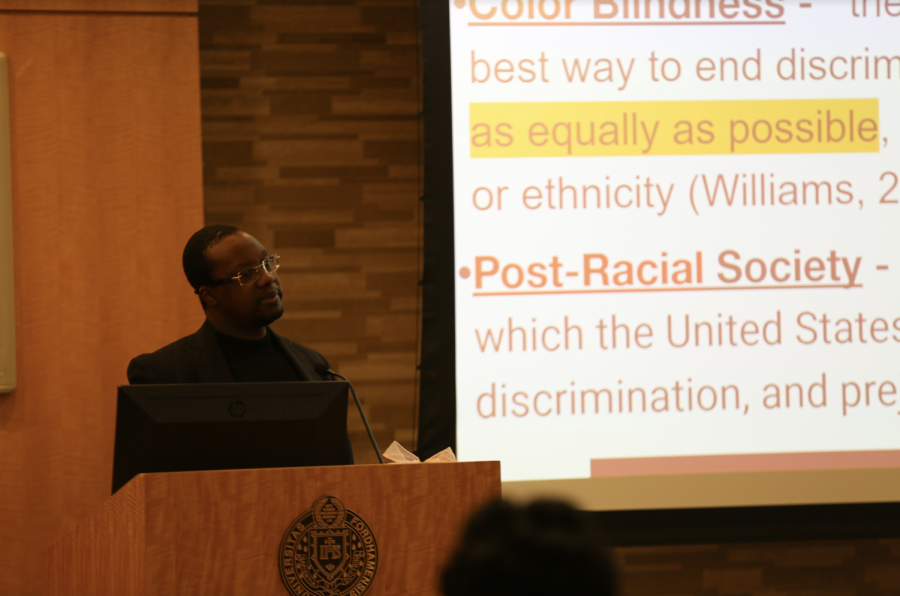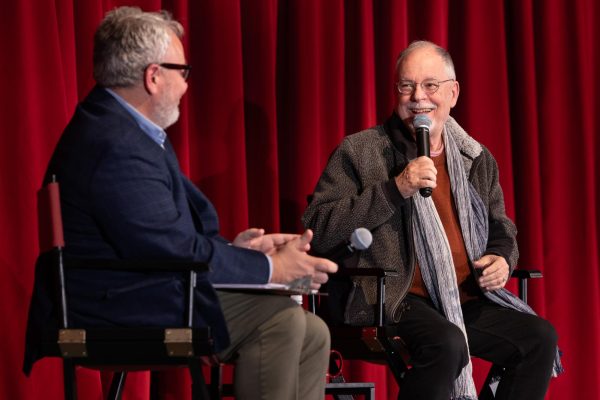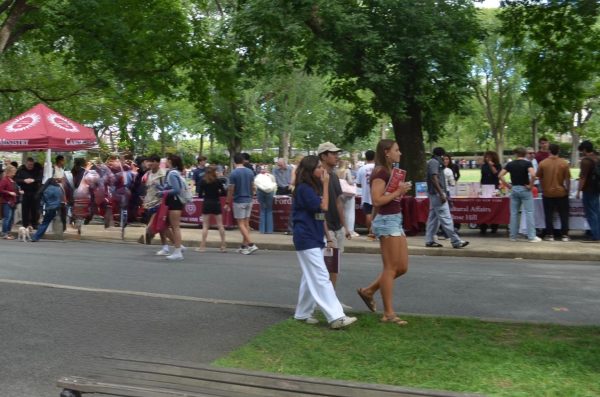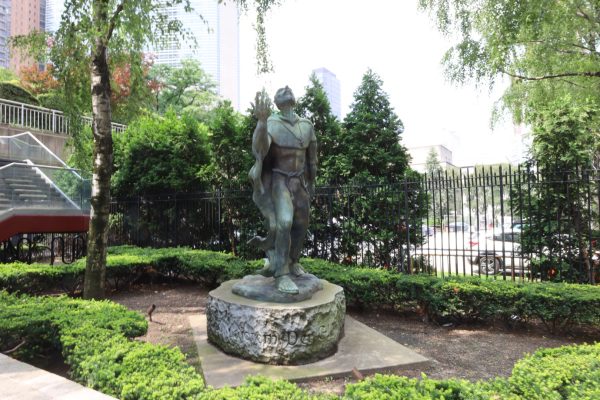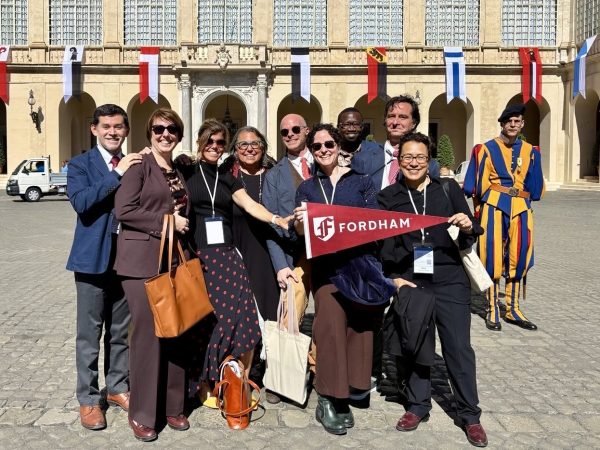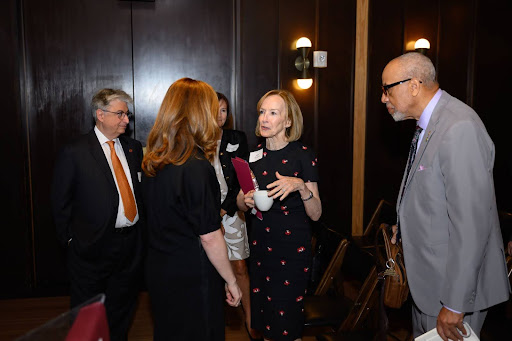Diversity Action Coalition (DAC) Hosts Lecture and Workshop on Antiracism
On Monday, Feb. 27, United Student Government’s (USG) Diversity Action Coalition (DAC) hosted a Black History Month event with Clarence Ball, director of diversity, equity and inclusion at the Gabelli School of Business. The event was a lecture and workshop on antiracism and allyship with food from Paula Soul’s Food Cafe in Bepler Commons.
Briana Al-Omoush, FCRH ’24, vice president of diversity and inclusion on USG and chair of DAC, explained that Black History Month is an important time to celebrate Black Americans’ achievements.
“The Fordham community needs to use the month to celebrate the achievements of Black Americans despite the tremendous amounts of hardship and oppression they have had (and continue to, due to systemic issues) to face at the hands of white oppressors,” said Al-Omoush. “As a PWI [predominantly white institution], Fordham is responsible for creating spaces that reflect on Black history in programming.”
Al-Omoush added that DAC is a committee that is able to educate via programming.
“Bringing in someone with expertise in antiracism and allyship, such as Professor Ball, is vital in taking us beyond the limiting and whitewashed history books that the majority of students have been taught with throughout their education,” said Al-Omoush.
She added that the event was an opportunity to raise awareness about intersectionality.
“I want to use this as an opportunity to remind the university community that Blackness is not a monolith, and we hope such programming teaches attendees that there are so many intersections within the Black identity,” said Al-Omoush. “More critical than DAC’s event, are events that are being put on by Black student leaders (kudos to ASILI’s month-long programming). However, non-Black students are still responsible for educating themselves on Black history, and not just in February.”
Ball started with ground rules and definitions for the workshop, and he then proceeded to show a video that explained unconscious biases and how we automatically make snap judgments that affect how we treat the people around us. Ball explained that there are ingroups and outgroups, where people are put into us-versus-them situations.
Throughout the event, Ball kept the floor open for discussion, and he asked various questions throughout the presentation to keep students engaged.
Ball explained a ladder of inference, which he said includes observations, selected data, meanings, assumptions, conclusions, beliefs and actions. He explained that many gaps are filled in within the ladder which end up affecting our actions.
He also explained that these judgements can stem from past experiences, culture, background or exposure to media.
“Unconscious bias can be triggered,” said Ball.
Ball explained an example with charts from his presentation. The chart showed preferences for certain body types over others. He explained that unconscious biases lead to automatic assumptions about these people.
After going through the definitions, Ball moved on to a section on anti-racism, and he gave an explanation of what racism was.
“It is an institutional power,” said Ball. “Prejudice is not the same thing. An individual person not liking an individual person is prejudice. Racism is when the collective power of your group has the power to do an entire disenfranchisement, subordination of another group of people.”
Ball then went through Supreme Court cases to show racism throughout history in legal doctrine.
His first example was Plessy v. Ferguson in 1896, where the doctrine “separate but equal” was created. Ball explained that since Homer Plessy was only 7/8 Caucasian, he was not allowed to sit in the “whites-only car.”
Plessy argued to the Supreme Court that their rule was an asymmetrical rule, and it showed an asymmetry in the system. Justice John Marshall Harlan argued for color blindness and said that segregation was not needed, but the majority opinion upheld the state-imposed racial segregation.
Ball also discussed Brown v. The Board of Education, University of California v. Bakke, City of Richmond v. J.A. Croson Co. and Grutter v. Bollinger, which were all landmark Supreme Court cases concerning race and affirmative action.
Ball raised the question of who was the primary beneficiary of affirmative action during its apex. After the room discussed it, Ball explained that it was white women.
“The prevailing idea was that affirmative action was only helping Black people,” said Ball. “But in fact, the primary beneficiary of affirmative action was white women.”
He then explained that the media distorted who it actually benefited. Ball explained that the same thing is happening with critical race theory.
The workshop ended on the topic of allyship, where he showed a continuum from apathetic to aware to active to advocate to help explain how someone can become an ally.
At the end of the event during the discussion, an audience member raised the question of how to reach people who don’t want to listen. Ball responded by saying that too much antiracism work is directed at people who do not want to listen, and it is better to focus on the people who are open and want to listen.
At the end of the event, USG’s DAC raffled off a book “Outliers” by Malcolm Gladwell to one of the attendees of the event.
“I hope attendees were able to have a broader conversation about Black history and racism as a whole,” said Al-Omoush. “This event was one of the best antiracism discussions I have been a part of at Fordham because it left attendees feeling uncomfortable about the lack of discussion that is being had on this front.”
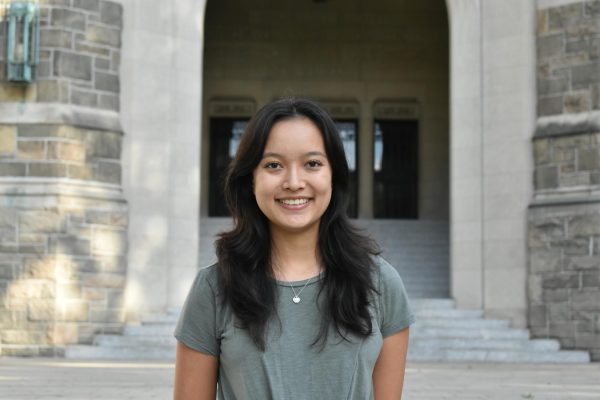
Emma Kim is a junior from Pittsburgh. She is double majoring in economics and English. She started as a contributing writer for news in her freshman year...



































































































































































































